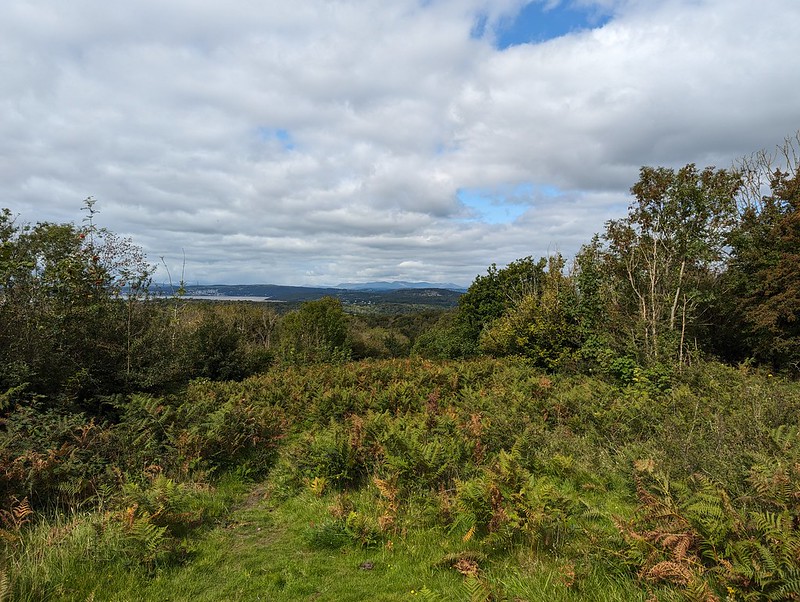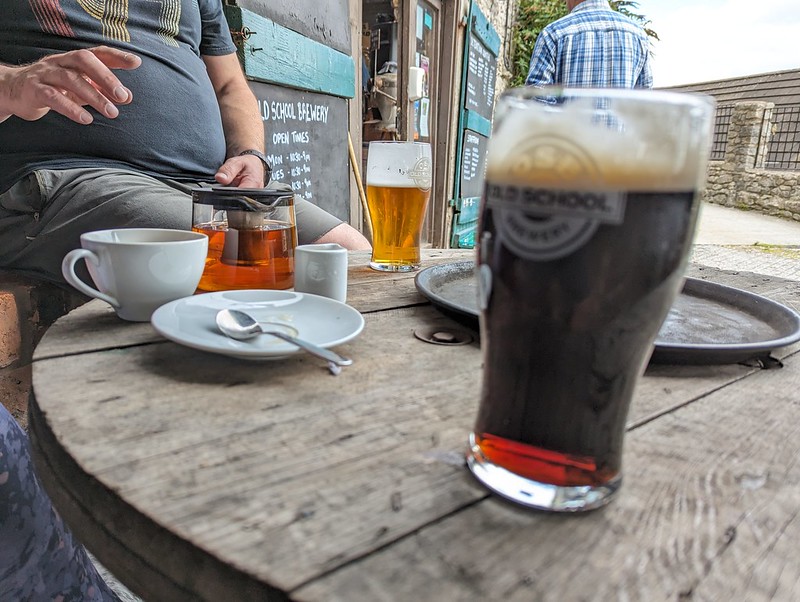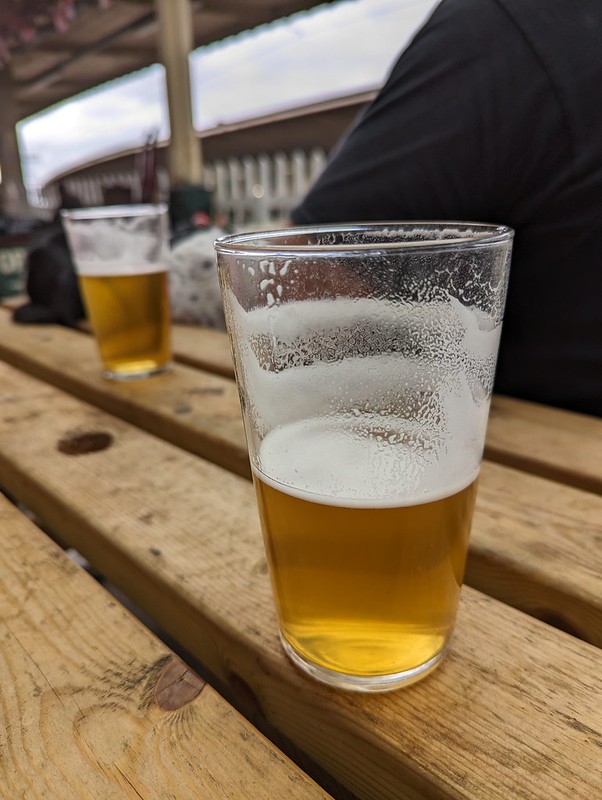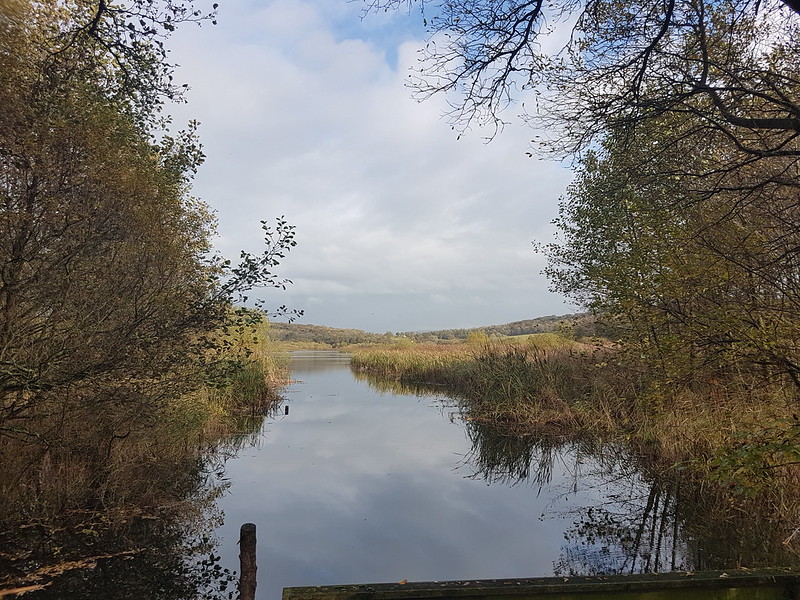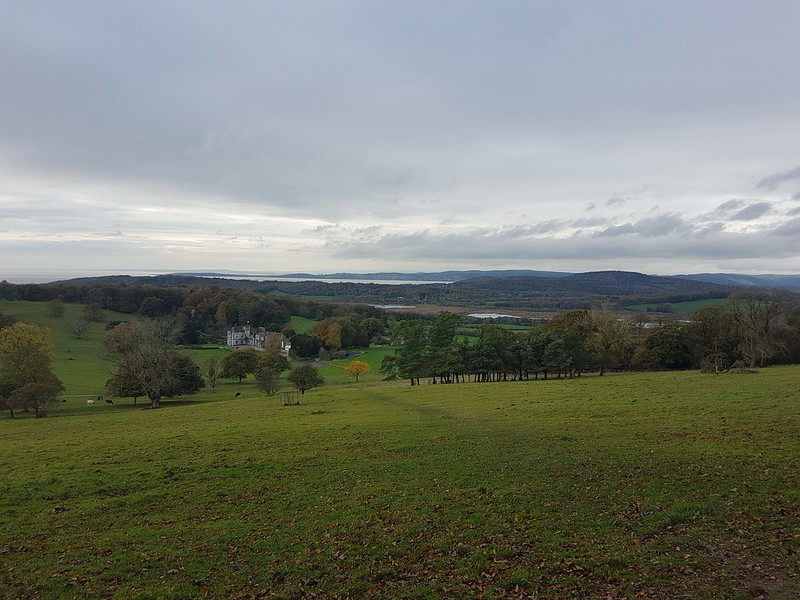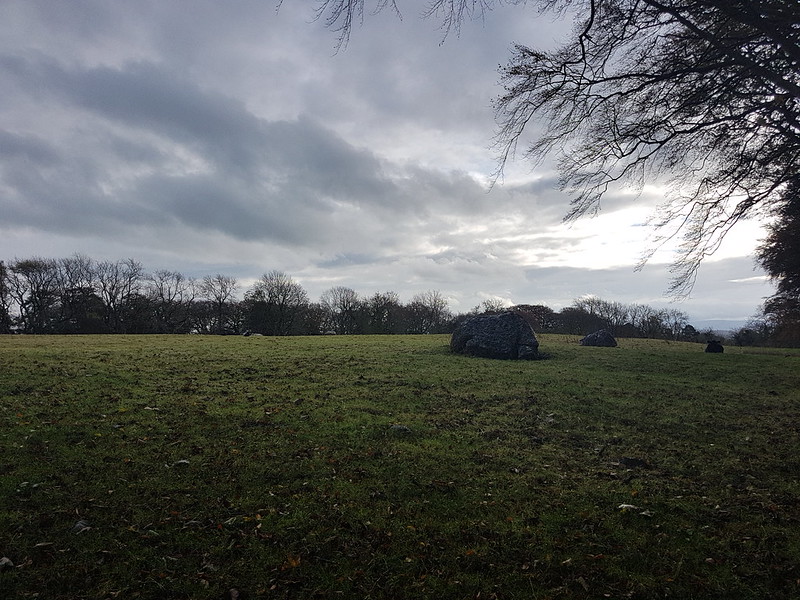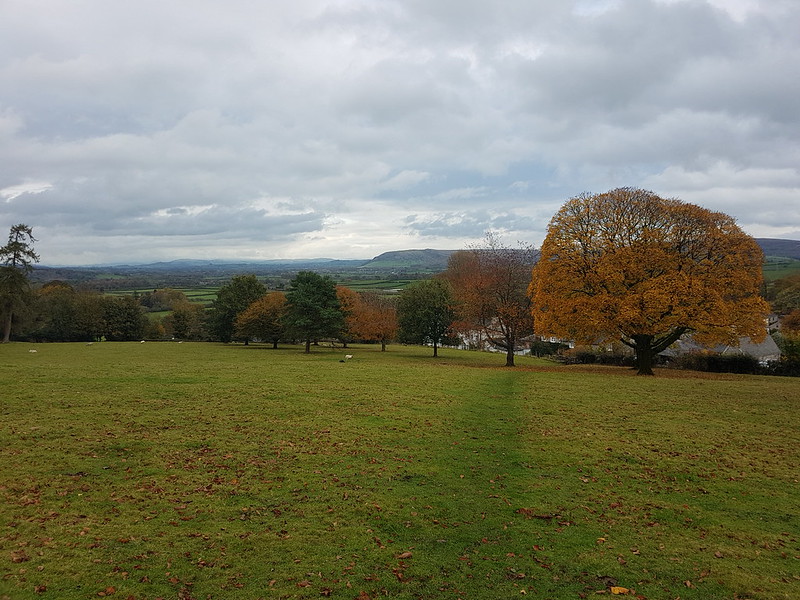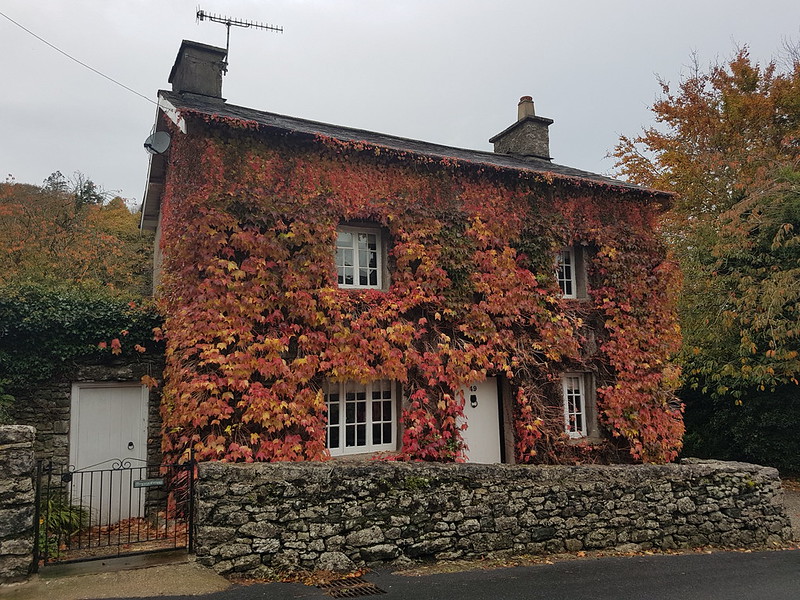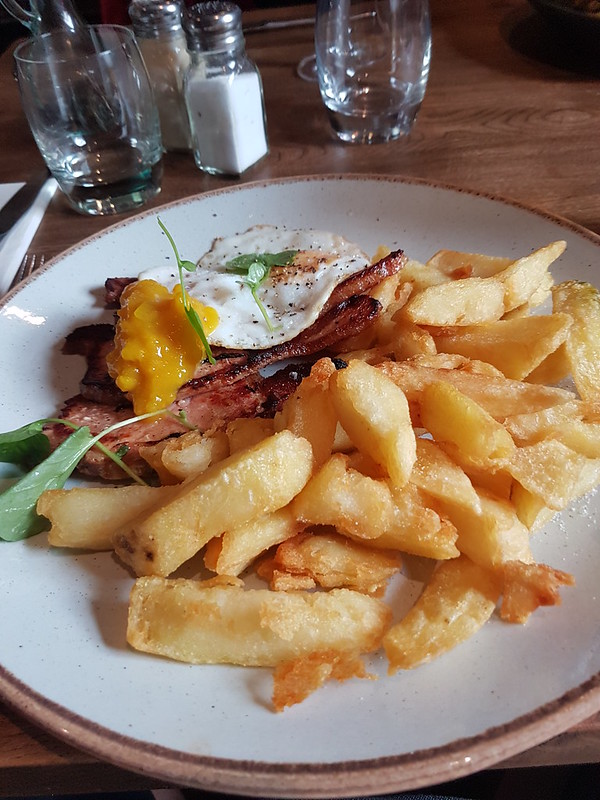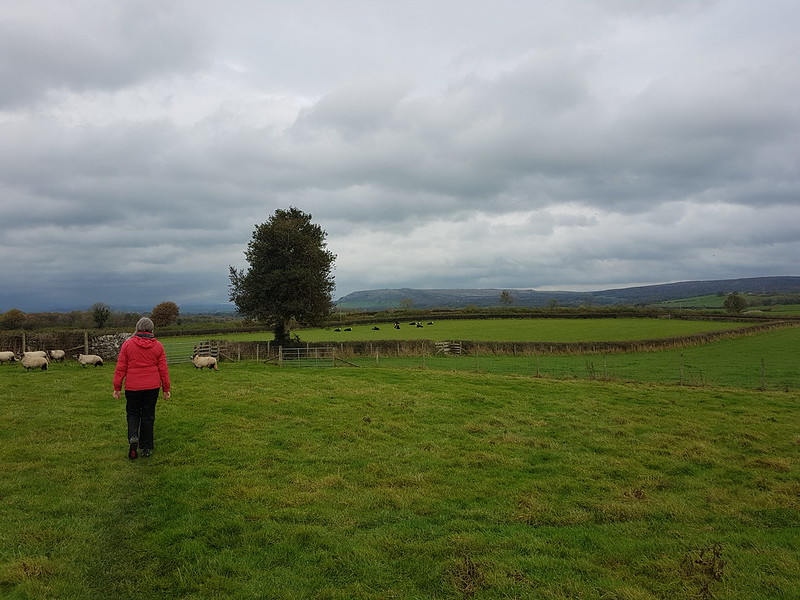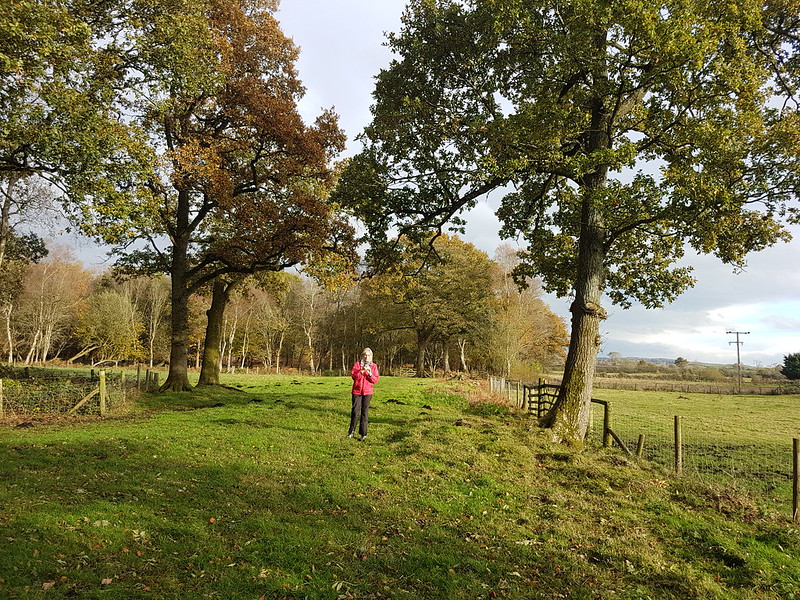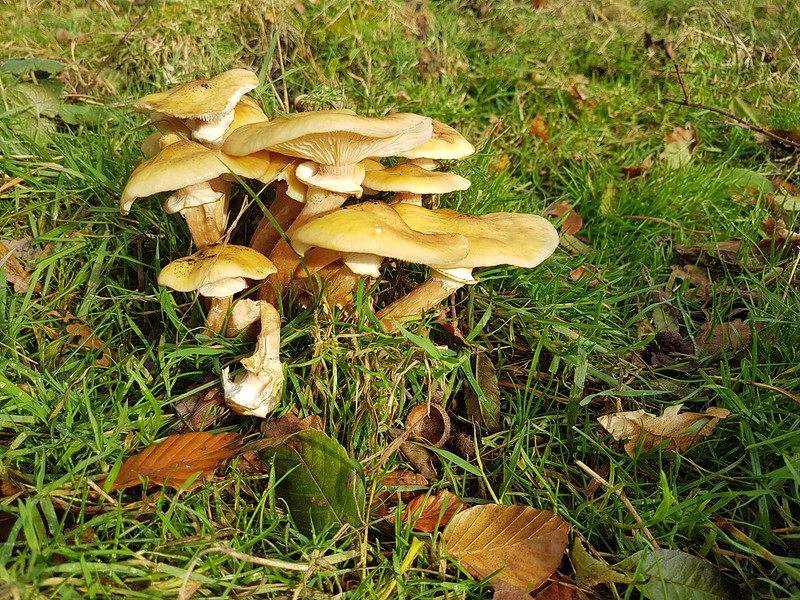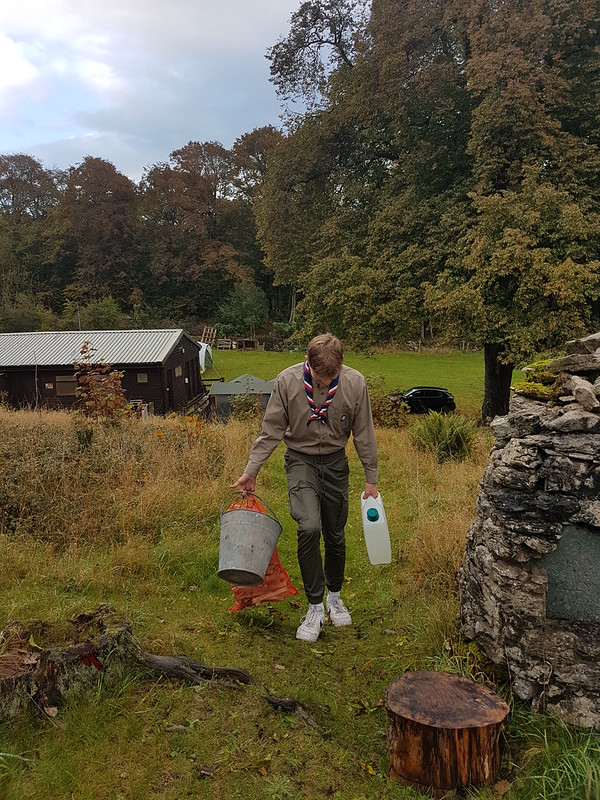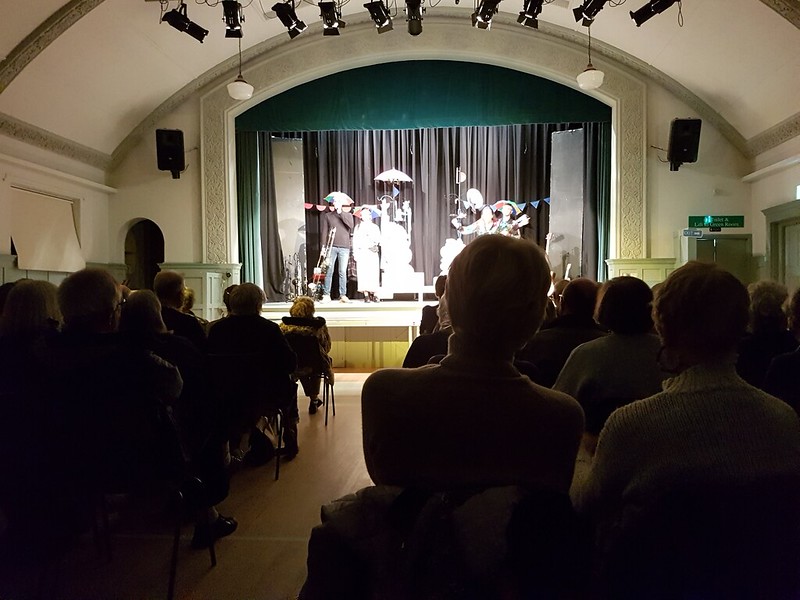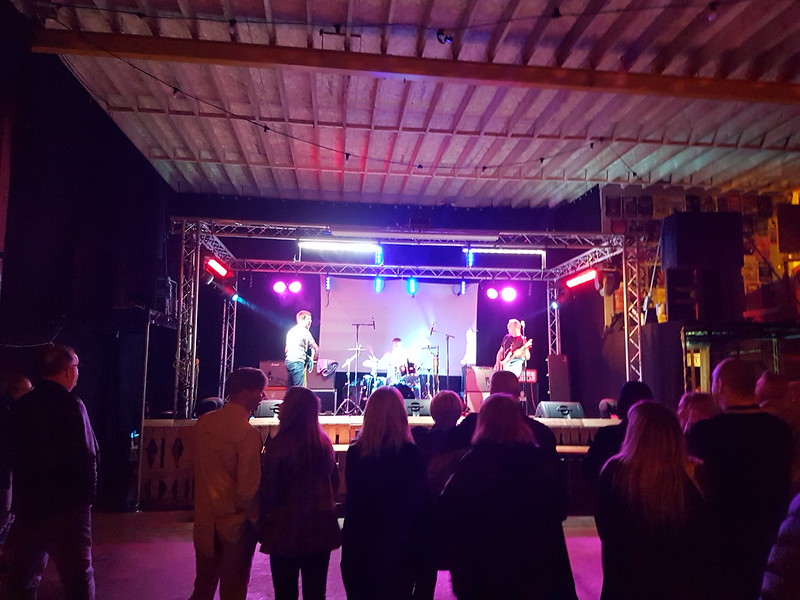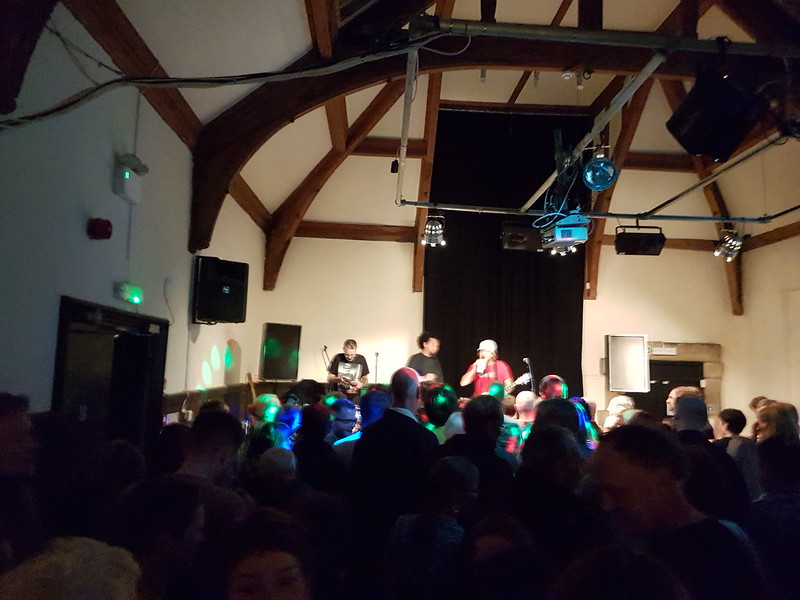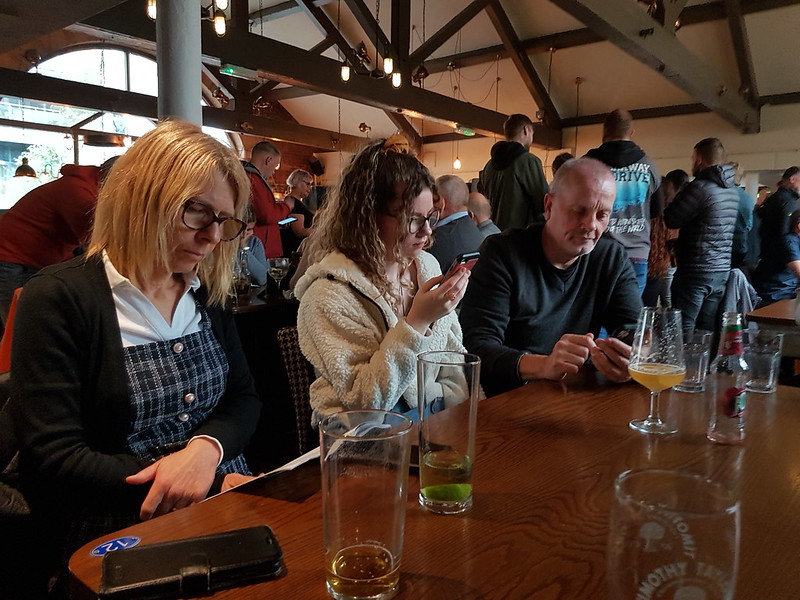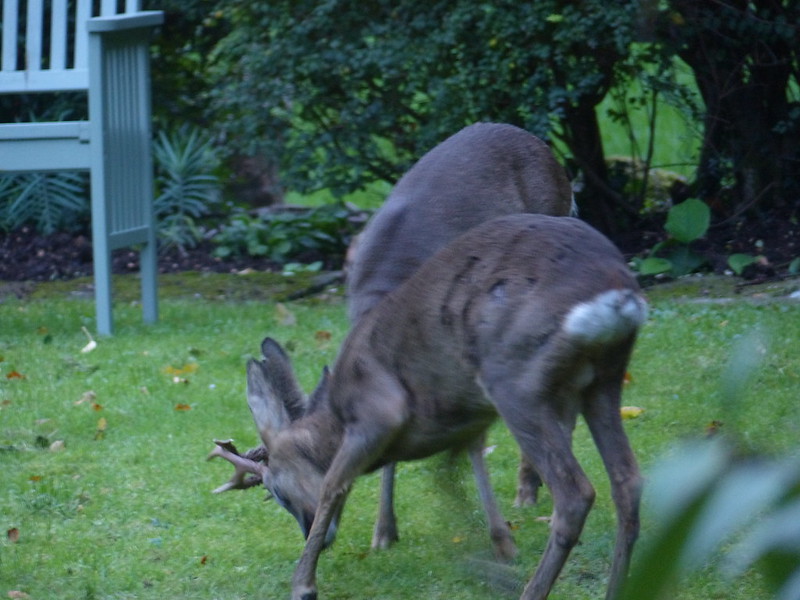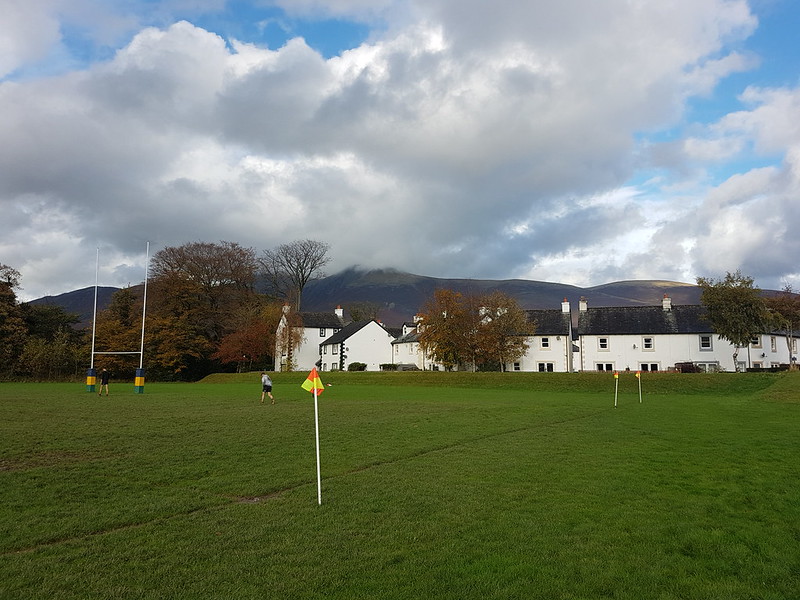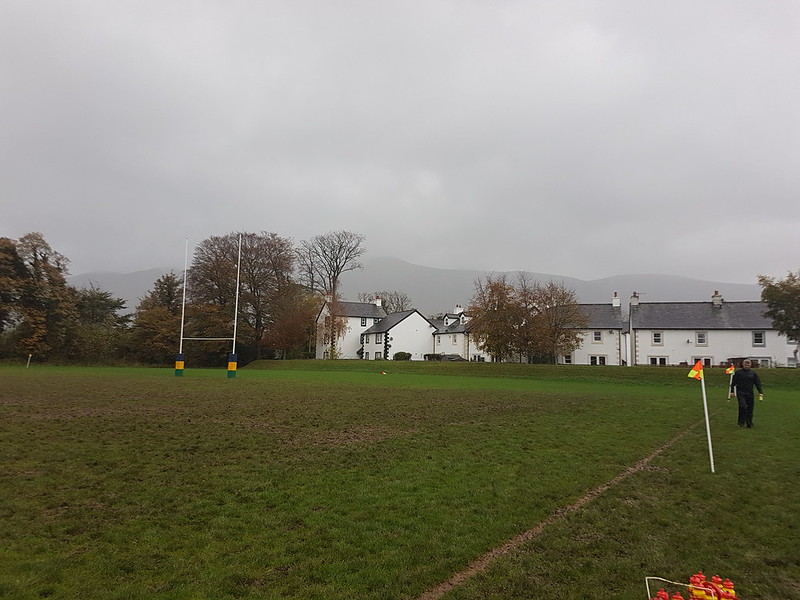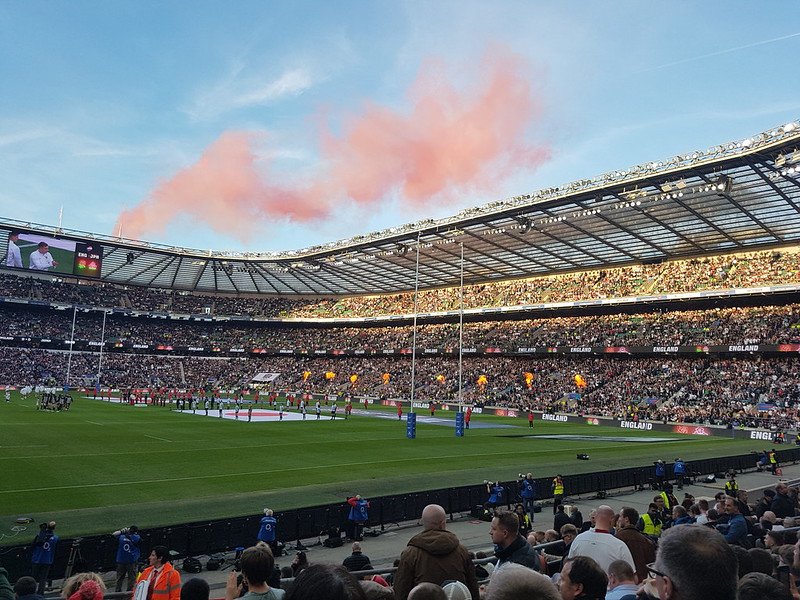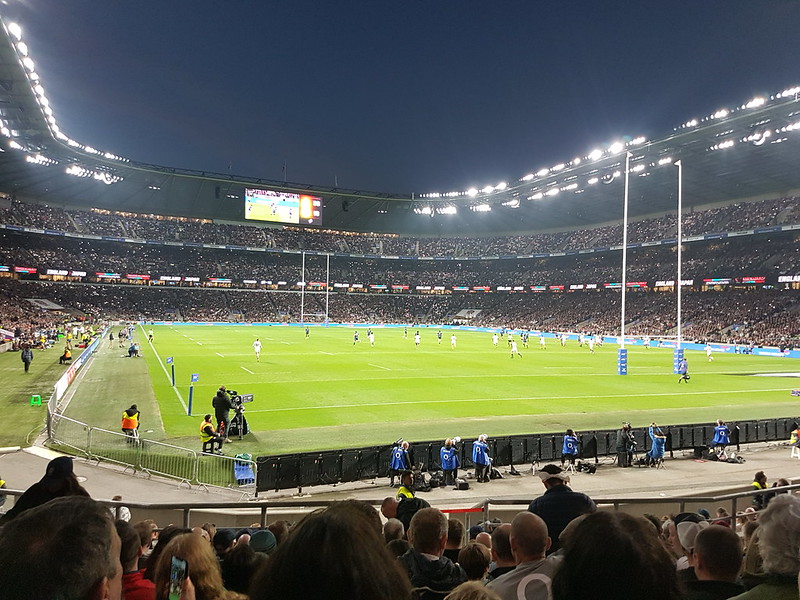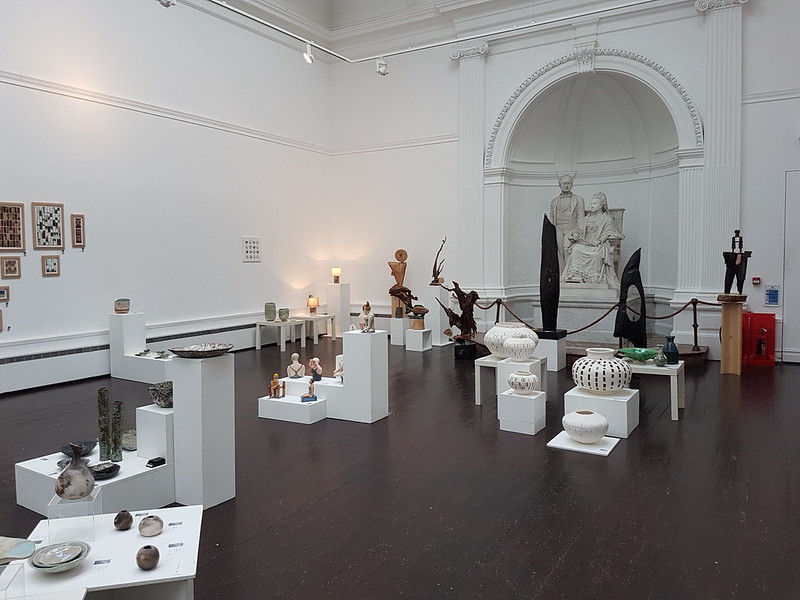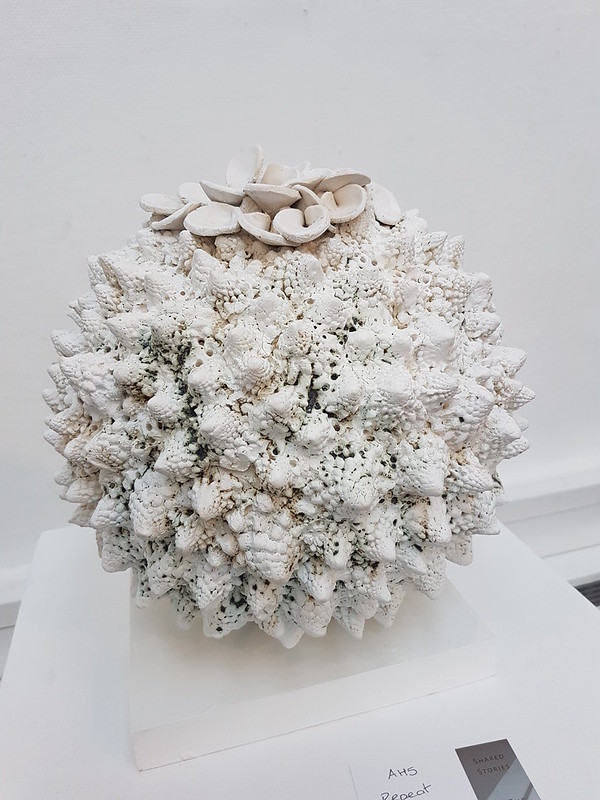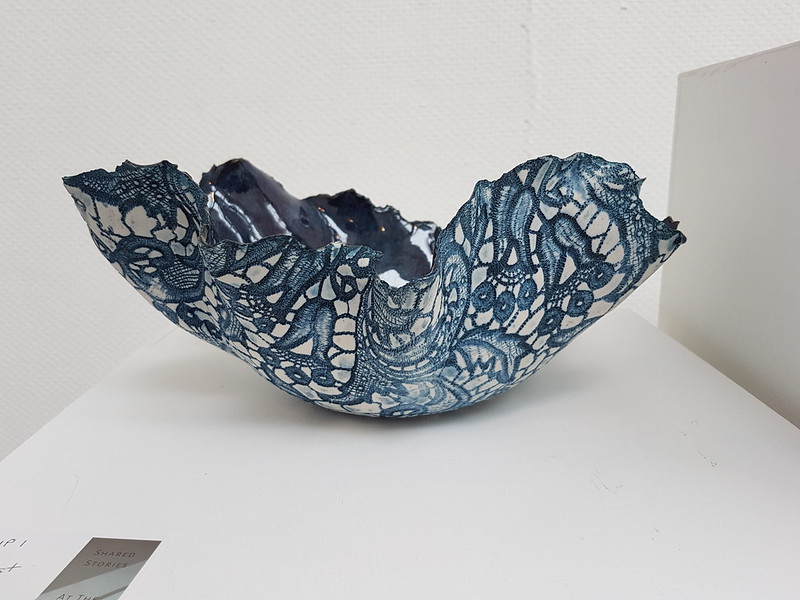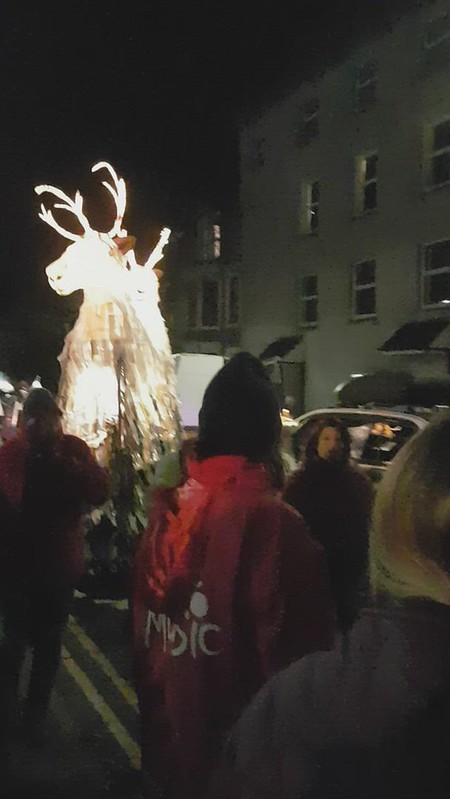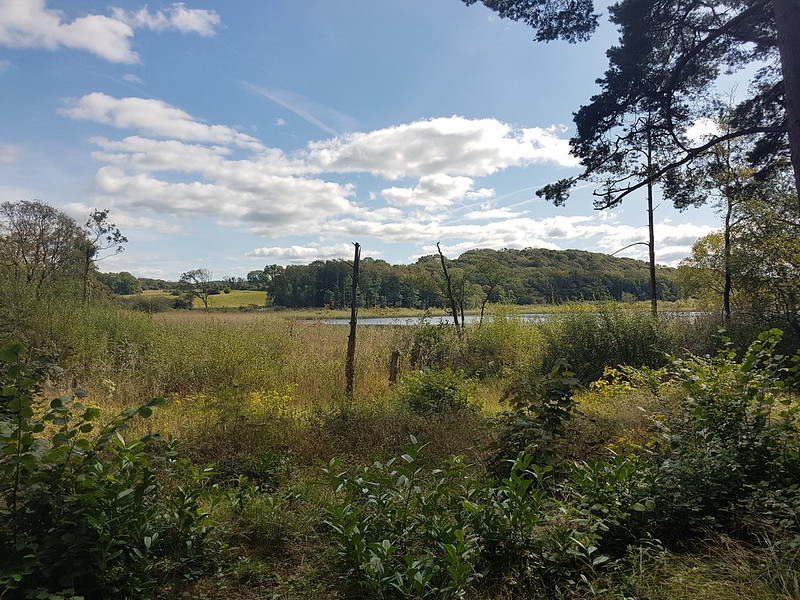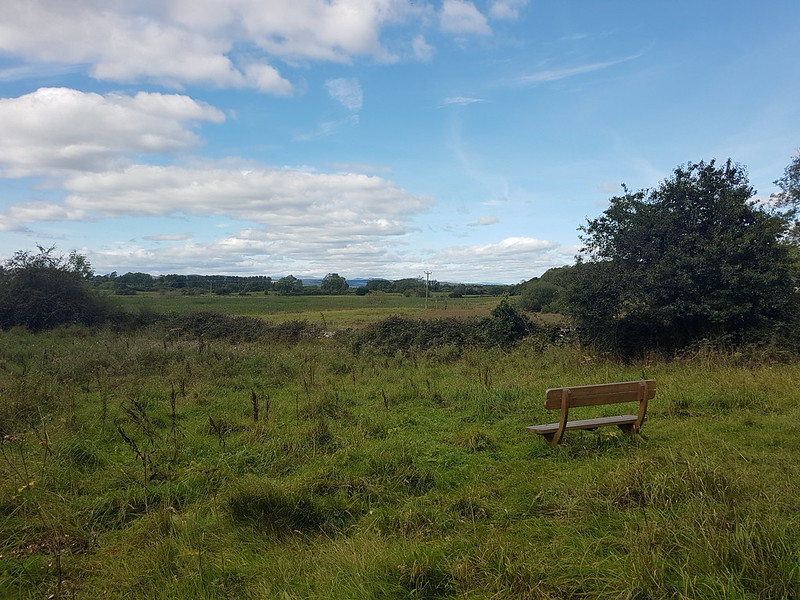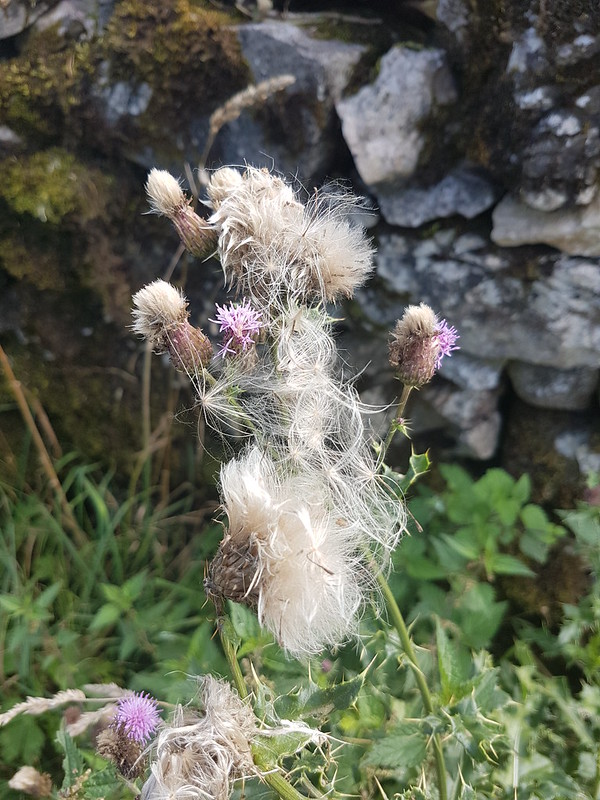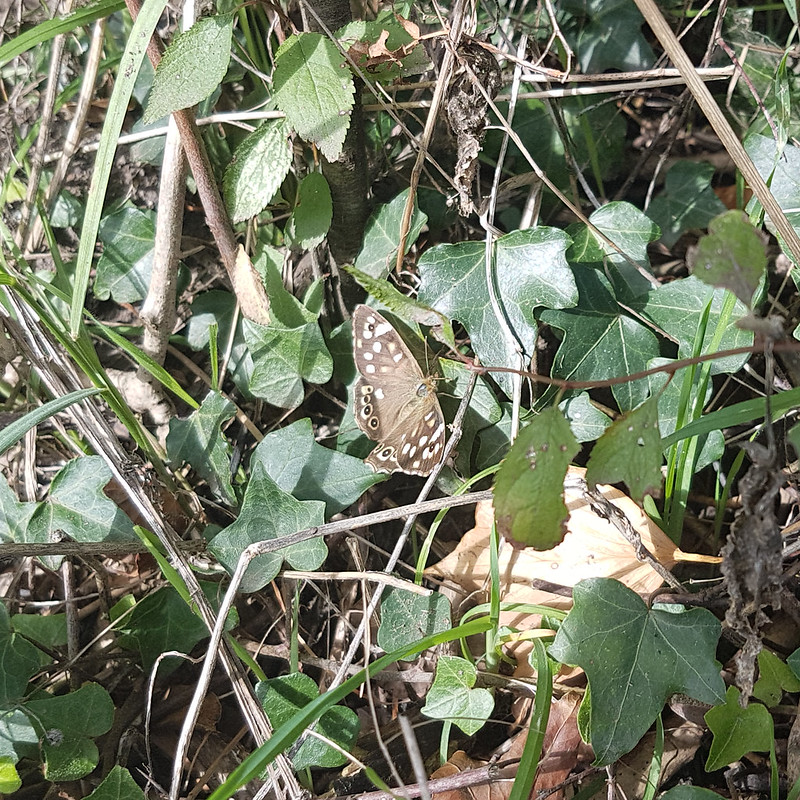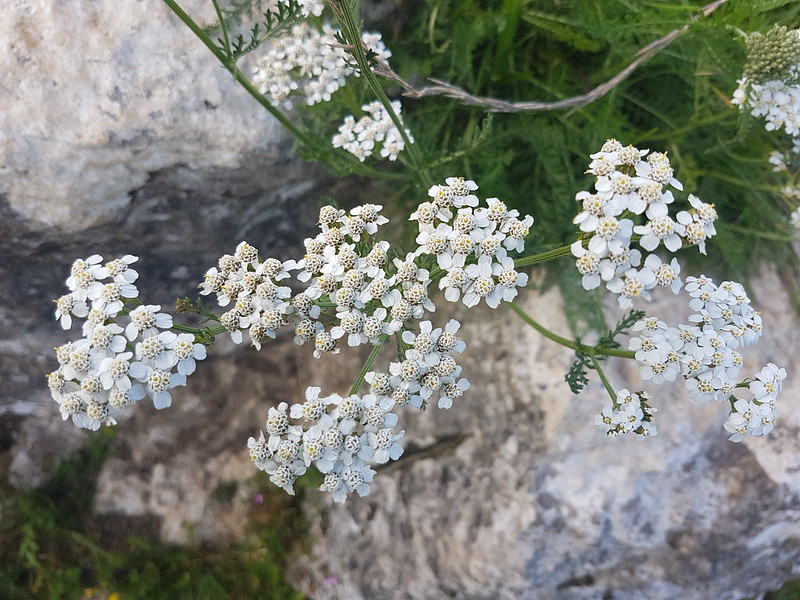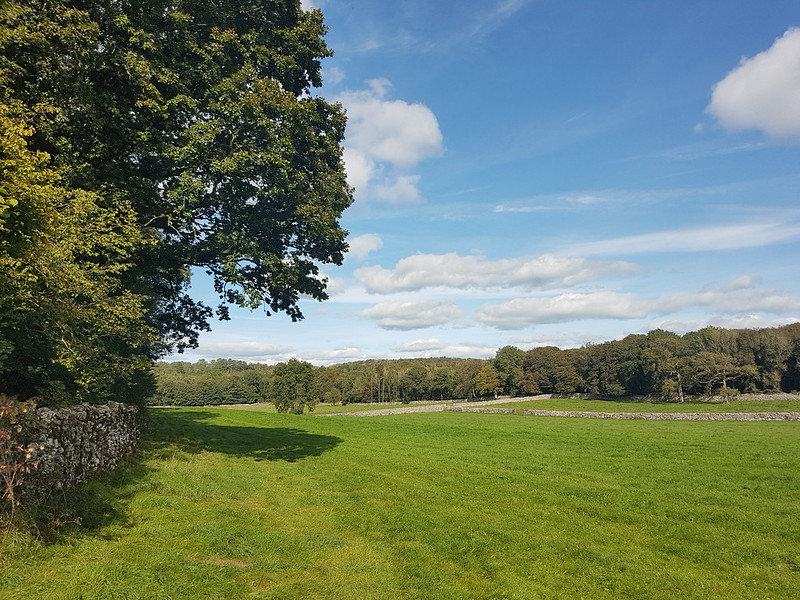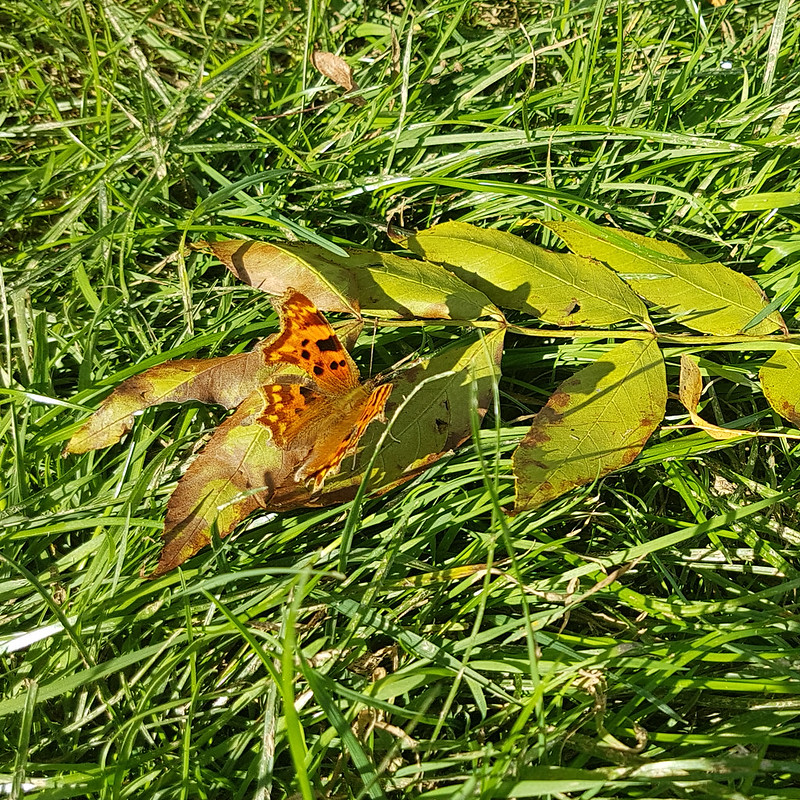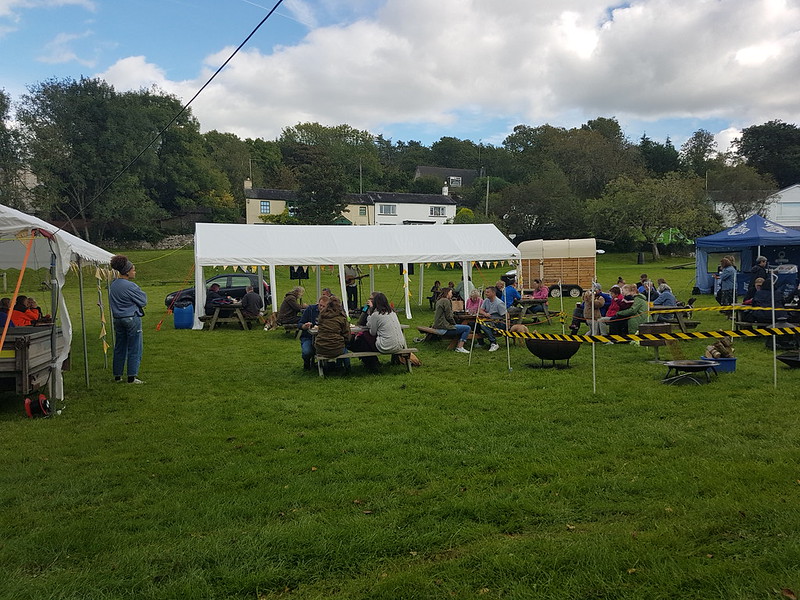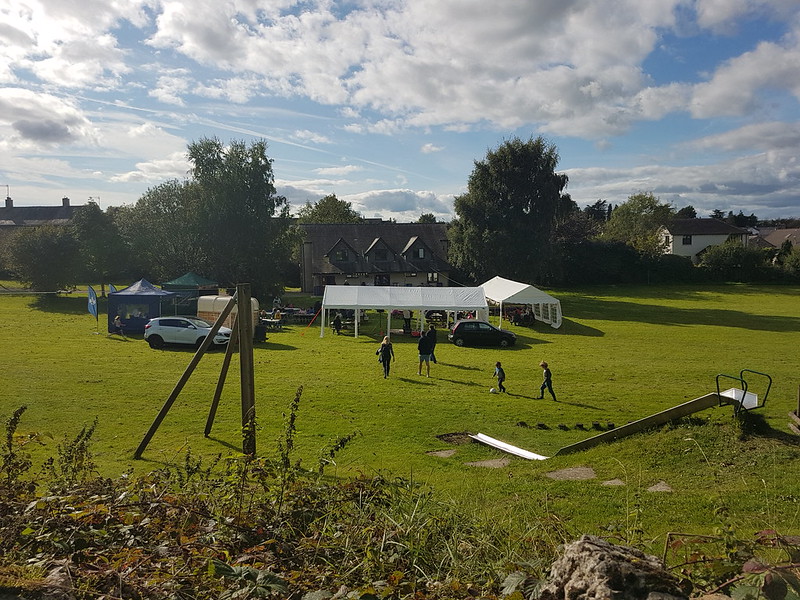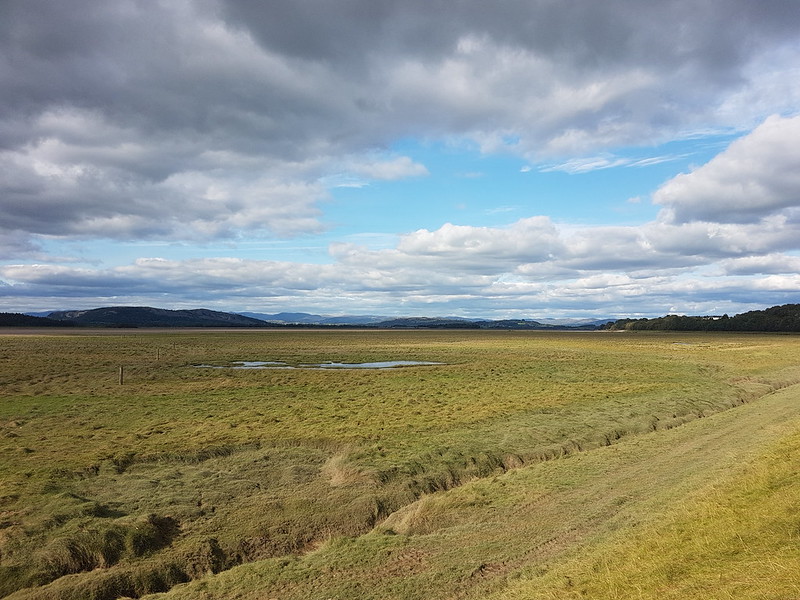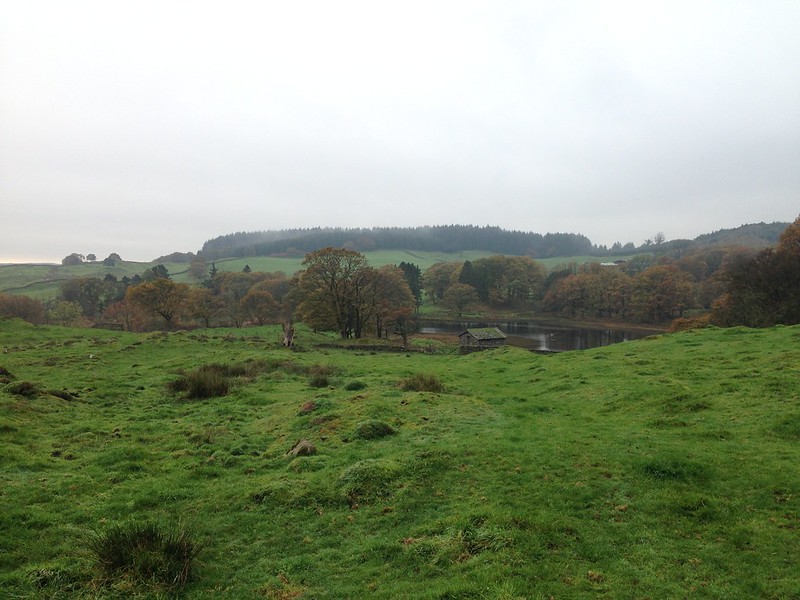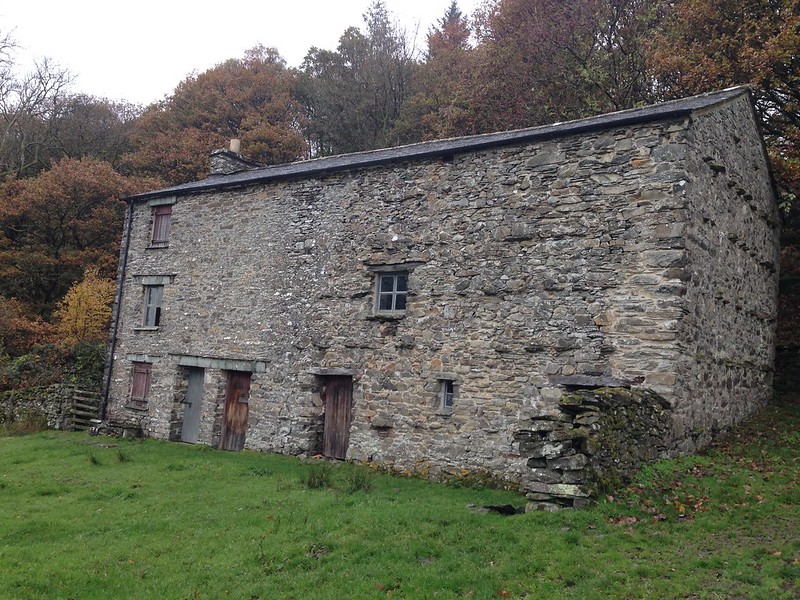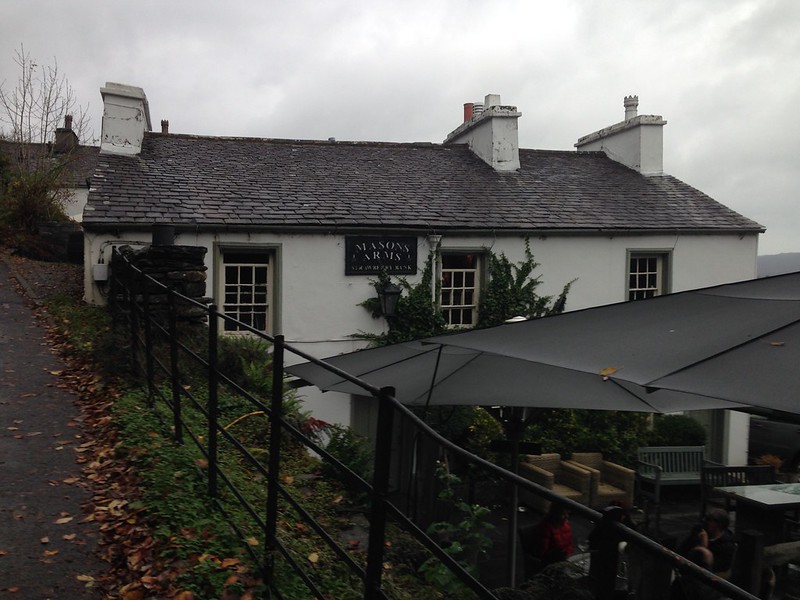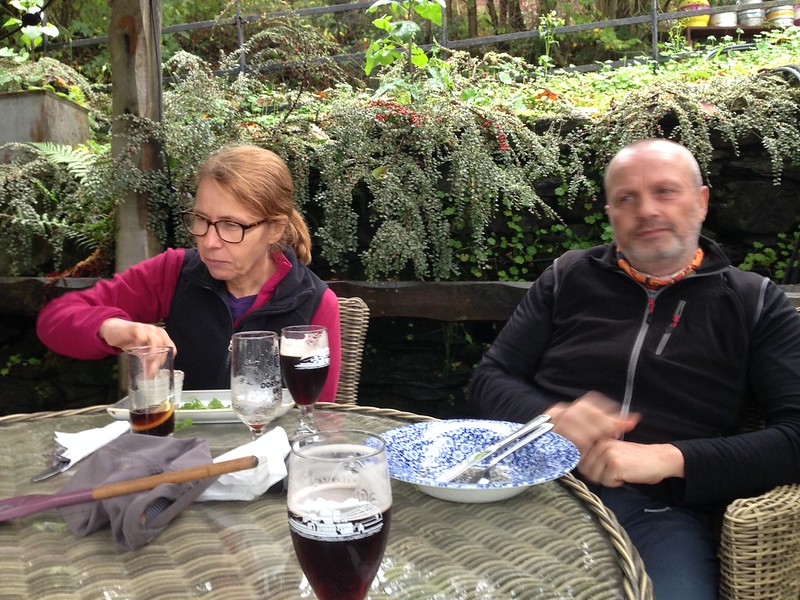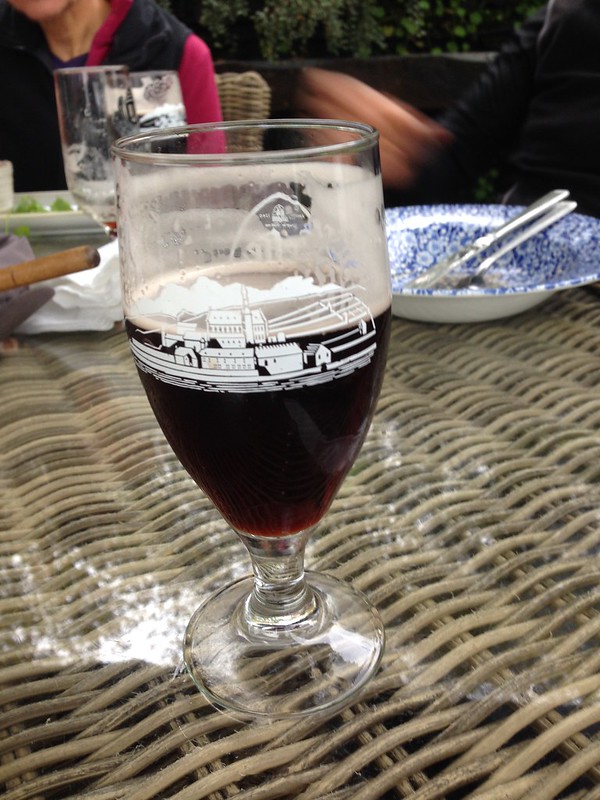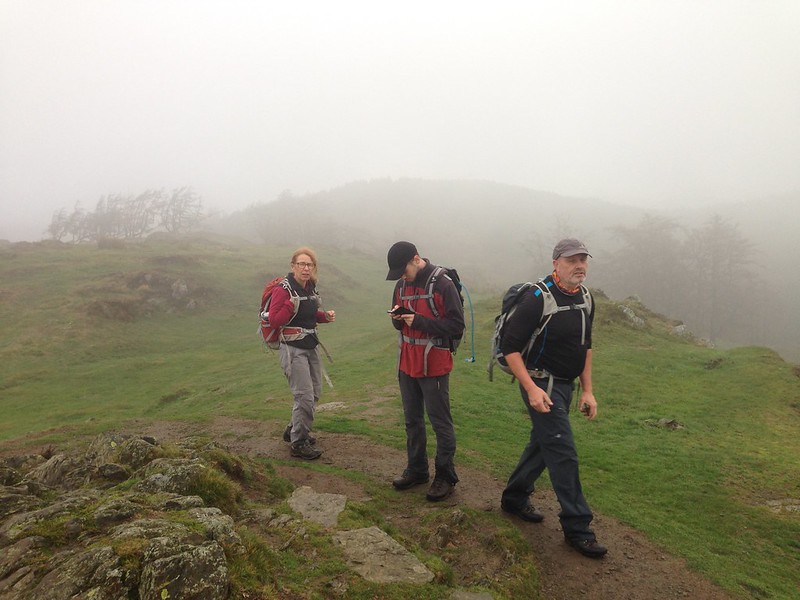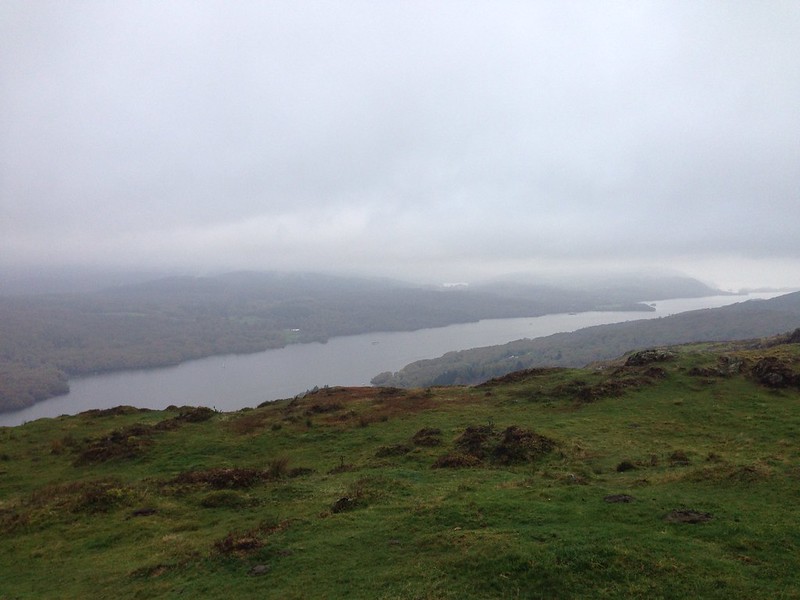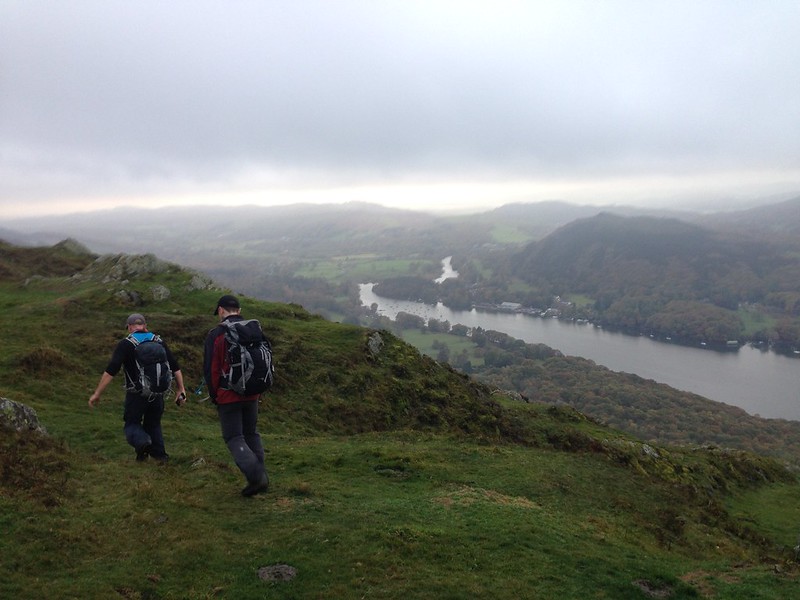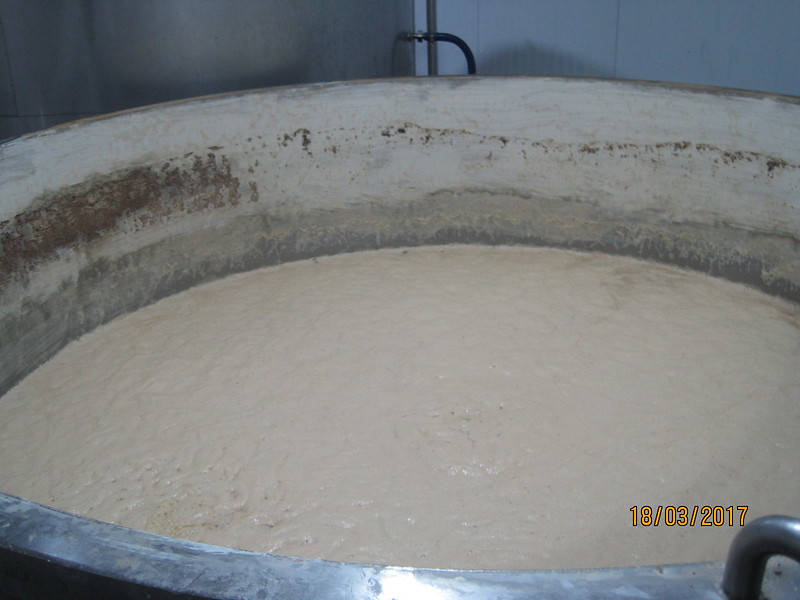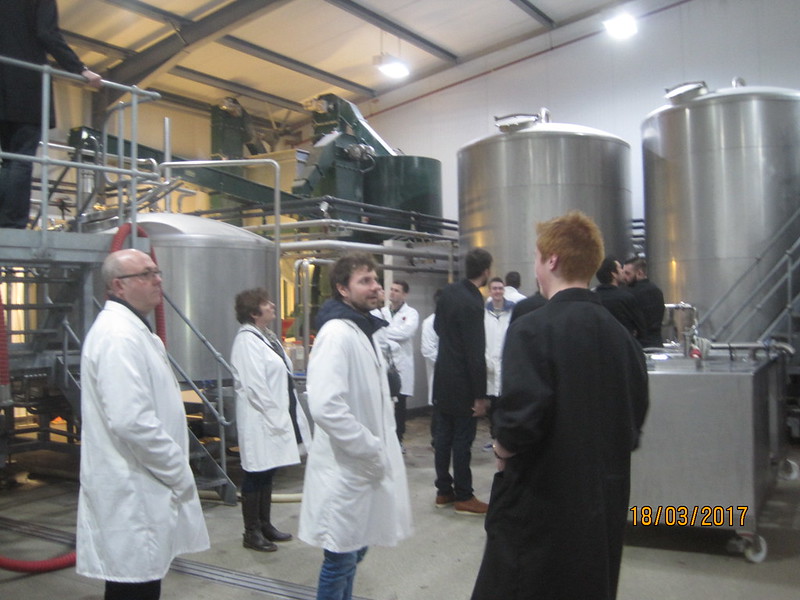
Not so long ago I was musing on the elements which come together to make a ‘good day on the hoof’. On Saturday just gone I had a day with my friends M and F which must have come pretty close to perfect. Halfway decent weather is clearly a prerequisite: the forecast had been dreadful and the early part of the morning was wet, but fortunately F is very attached to her duvet and by the time we were climbing Gummer’s How the sun was shining and out of the cold wind it was very pleasant. Gummer’s How must get bored with being described as a Lake District mountain in miniature, but ‘the cap fits’, and so it was a little disconcerting to arrive on the top to find a small herd of cows sunning themselves there.

M and F on Gummer’s How.
The views – south across the Kent estuary, east to the Howgill fells and north along the Lake to the higher fells of the lake District – are stunning.

“a lovely little pool among the hills, long and narrow, beautifully indented with tiny bays and headlands”
Nathanial Hawthorn on Windermere quoted in ‘The Tarns Of Lakeland Volume 2: East by John and Anne Nuttall
There are many larch trees on the slopes of Gummer’s How and they were flowering, the tiny spiky red flowers looking like miniature pine cones.

Birch Fell, another Birkett, is covered with forestry, we probably found the top – it was hard to tell, and after a bit of forest bashing we found a slight path which follows the boundary of the forest down to a boggy right of way which in turn took us to the road at Lightwood.
On the verge we found large round leaves with flower-stalks between.

It looked rather like butterbur but the flowers were white. I’ve since discovered that there are two introduced species of butterbur with white flowers – white butterbur and giant butterbur. So this will be one of those then…

A fairly long section of road-walking here was justified by the lunch stop which fell roughly in the middle of it – The Mason Arms at Strawberry Bank. Be warned however – the food is quite pricey, and don’t order the baked mushrooms as a main course, as F did, unless you are on a severe diet. What’s special about the Mason Arms is the beer however – a sign outside boasts that they serve 200. I had a couple of very pleasant tipples – I did cause some consternation at the bar when I asked for a Bos Keun*, partly because they didn’t have it, but also because the bar man hadn’t heard of it. I remember having it here a couple of times before – the last of them on my stag weekend almost 10 years ago. Perhaps the pub has changed hands since then?
A short walk from the pub is St. Anthony’s church. Built in 1504 it’s in a secluded spot away from the road. The churchyard was full of daffodils. The roof looks to be almost new and from the outside the great antiquity of the building is only really apparent in the windows. 
Inside the old beams in the roof…

…and some of the church furniture are evidently very old. In the photo above you can see two box pews – used, I believe, to help the gentry to keep themselves separate from the hoi polloi – and on the right a triple-decker pulpit dating from 1698 apparently.
This painted panel is very like the ones which B and I saw last spring in the nearby church at Witherslack and I wondered whether they were by the same hand. Perhaps, having had a chance to re-examine the pictures from last year, this is not by the same artist – but it is the same coat of arms, that of Queen Anne – I wonder why she had such a fan club in the Winster valley?

From the church a path took us up across the road and on to the open fellside where a path, not marked on the OS map, takes a steep climb to the excellent viewpoint of Raven’s Barrow.

Looking across the valley to Whitbarrow and Yewbarrow.
The map shows a monument on the top:

It’s a large and very tidy cairn with a built in seat (although you need to be quite petite to sit comfortably). There’s no indication of what this monument might commemorate, but there is a lot of scratched graffiti, some of it quite old, which F is perusing here.
Shortly beyond Raven’s Barrow is Heights Cottage which has an interesting history. All of the doors are padlocked and the building appears to be unused now – but it is also obviously being looked after – it looks like the near right corner of the wall was re-pointed relatively recently for example.

“Used as a Quaker Meeting House until the 1920s, this was built in 1667 to comply with the Five Mile Act, which prevented a Non-conformist preacher from living or teaching within 5 miles of a town.”
from The Tarns Of Lakeland Volume 2: East by John and Anne Nuttall
From here it was a short walk back to the car, passing a couple of small reservoirs. First Middle tarn:

And then Sow How Tarn:

Which even has a boathouse, the roof of which sports a weather-vane with, appropriately, a decorative pig:

And which, this weekend at least, also had a resident pied-wagtail…

So…great weather, great company, great views, nice beer, a bit of history, some stretches of water. Is this ‘The Bestest Little Walk In the Lakes’? Quite possibly not – if you have a suggestion for a better one I’d be very glad to hear it!
Thanks to the Shandy Sherpa I now know how to add maps to my posts.

M’s sat-nav said 10km. But it also said 570m of ascent which can’t be true (a lot less then that surely?). Bing maps gave the distance as 6.21 miles. So, about 6 miles, some boggy bits, one bit without a path, a modicum of up and down, free parking. What else could I tell you? Oh – two Birketts, one of which (Gummer’s How) is also an Outlying Fell. And Raven’s Barrow might be an Outlying Fell too.
*I’m not in the habit of drinking 10% beers – I didn’t remember it being so strong and it didn’t taste like a barley wine.

